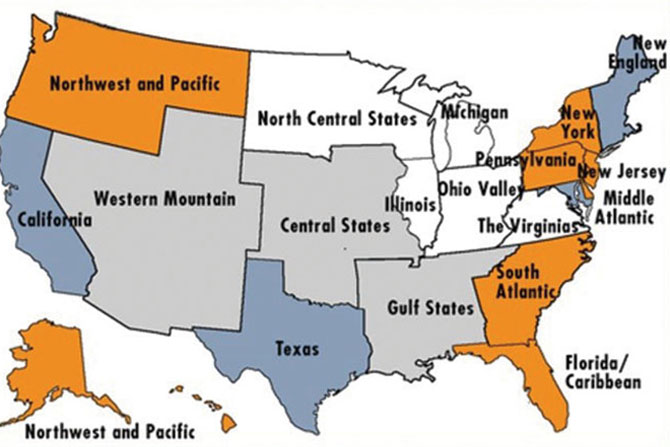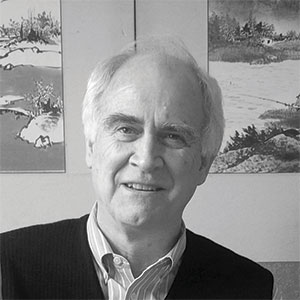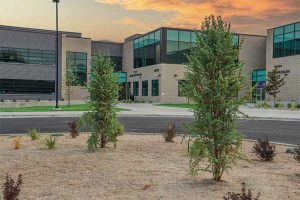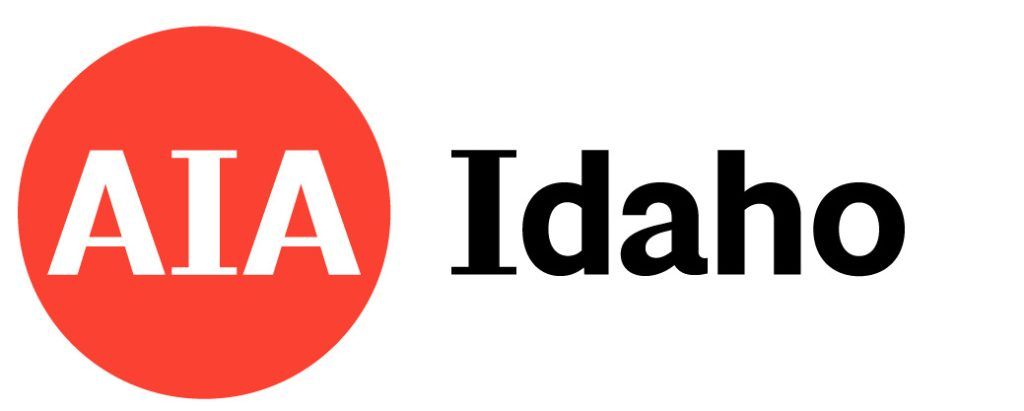By Roderick Ashley, FAIA

Having joined the American Institute of Architects in 1983, I was not always the most active member. I became involved with the AIA Portland Design Awards program several years later but continued to stay on the periphery of activities. I always seemed to find time to attend events but never stepped up to get involved. As a sole practitioner, I always felt there was never time for AIA and wondered what it did for me.
But that began to change — and I was hooked once I attended the Oregon Design Conference. I became a member of the AIA Oregon Council board of directors and served from 2005 until 2016, and after holding every executive committee position, became president in 2014 and 2015. Before that, I was the liaison from the Architecture Foundation of Oregon to the Center for Architecture and became treasurer after several years on that board. Five firms started the Architecture Foundation of Oregon in Portland, and I was fortunate enough to be invited to serve on their board, eventually becoming president in 2016 and 2017. Each opportunity became a rich experience with a group of peers and friends who will never be forgotten. I guess I simply found some time.
As one of two regional representatives for the Northwest and Pacific Region, I am also a member of the AIA Strategic Council, Class of 2018-2020. My dual role is to help lead the NW&PR and participate in the council’s numerous activities. This year is my last one in this position, and I can say without a doubt that it has been one of the most rewarding opportunities I have had in connection with the AIA and my professional career.
I am often asked what the Strategic Council is about and what it does. When the repositioning discussion began in 2012, the AIA’s governance model was challenged, and the national board of directors, consisting of over 60 members, was eventually reduced to 16 officers. Most members of the previous board were region directors elected directly by members of their regions. In reducing the board’s size, part of the repositioning plan was to create the Strategic Council, comprising members who would become the institute’s strategic thinkers. The new board of directors would have the fiduciary responsibility to the institute’s members. The council representatives would inform the institute of issues and opportunities that would affect the profession and lead the institute’s strategic planning effort.
Tasked with creating the AIA’s Strategic Plan, the council also became referred to as the institute’s “Think Tank.” The council looks ahead to the future for changes, disruptors, opportunities, and how to assure success for its members and the profession. It is charged with researching and reporting to the board on various conditions and initiatives the institute and staff might need clarification on or topics they may not be aware of. A maximum of 60 elected councilors (including 37 region representatives) meet face to face four times a year. They achieve their goals by holding monthly virtual assemblies, numerous study-group meetings and conference calls.
During my first two years on the council, I worked with the Transforming Architectural Education Study Group (TAE). We looked far into the future of students and emerging professionals to better understand their needs. We also looked at how the profession and practitioners relied on academia to provide the appropriate education for future architects. As circumstances can evolve quickly, students and practitioners need to be ready and trained for rapid transitions. Our work looked at trends in higher education in general and other professions that were also transforming their educational programs. This work led to our reviewing the documentation for assisting the AIA Board in their role at the National Architectural Accrediting Board’s ARForum 19 in Chicago, a collection of the five collaterals (AIA, AIAS, ACSA, NCARB and NAAB) in a progressive conference designed to transform the accreditation process for architecture schools. (Portland’s Barbara Sestak, FAIA, is this year’s NAAB President. She is the former dean at PSU’s College of the Arts.)
Last year my study group encouraged the AIA Board to create a permanent staff position to continue our work. It was of utmost importance to both our current and future practitioners. This year I am working on the Technology’s Impact on Practice Study Group (TIP) in conjunction with the Technology in Architectural Practice (TAP) Knowledge Community. We are interested in what technologies are available, how they impact our practice, how our services are valued, and how technology, in general, is continuing to change how we practice. These study groups consist of strategic council representatives, TAP Knowledge Community members, and invited members from throughout the AIA and others outside the AIA. Our work will be presented to the council the second week of December at our virtual assembly during AIA Governance Week.
About two-thirds of the council are from the 11 multistate regions like the NW&PR, seven single-state regions and the international region. The NW&PR is the fourth largest region and the largest multistate region with over 6,000 members. Approximately 57% of members are assigned to multistate regions, and the International Region has about 2,600 members.
Every year the NW&PR holds our annual meeting and leadership summit in conjunction with one of our component’s annual conferences. This year was to be hosted by AIA Idaho in Sun Valley, but it was decided to convene a virtual event in September for obvious reasons. At this gathering, leaders from the NW&PR’s components have the opportunity to discuss issues and options affecting their members and operations. Several work sessions are held during this daylong event, and these sessions provide topics from our members that are delivered back to the strategic council to help assemble the next year’s study groups. The annual meeting is open to all members in the region. However, to facilitate more in-depth and interactive conversation and collaboration, the leadership summit is reserved for component leadership only.
Having served on the AIA Oregon board of directors for over 10 years, I was privy to early conversations regarding repositioning. The main priorities were assuring that all members would have access to the same opportunities, strengthening member services and streamlining governance. The local, state and national tiers of the institute were studied in detail. The study of regions was overlooked during the repositioning years because regions are not considered to be institute components.
As you may be aware, AIA Portland and AIA Oregon introduced a resolution to study the region structure at the Conference on Architecture, A’18 in Las Vegas. The resolution was approved at the September 2018 AIA Board Meeting. A task force was appointed to study the issues raised in Resolution 18-7 and prepare a final report with suggestions. Han-Mei Chiang, 2018 AIA Portland Chapter President, and I were selected to be on the 12-person Task Force, along with three national staff members. McKinley and Associates moderated the task force. This consulting firm has been associated with many of AIA’s initiatives and knows its operations very well.
At this year’s April AIA board meeting, the board voted unanimously to adopt a new model that will reassign region responsibilities to the state council and state chapter level. Dissolving the regions and moving to this single-state model for selecting representatives to the Strategic Council is intended to provide more direct representation for members. A task force has been assembled to study the ramifications of this decision and prepare an operational plan to be presented at next year’s annual business meeting in Philadelphia during the A’21 Conference on Architecture. If delegates pass the board action at that event, these changes will not occur until the beginning of 2022. There is little other information available at this time as the task force is still completing Its work.
The College of Fellows (COF), Small Firm Exchange (SFx), Young Architects Forum (YAF), and the National Associates Committee (NAC) all have representation coming from the region structure. The NW&PR has five members from these organizations on the Region Board of Delegates. How this structural change impacts these organizations within the institute will be studied and should be a critical component of the ongoing task force study.
There are five at-large representatives to the AIA Strategic Council positions open annually on the council, and I strongly urge all of you to look into this wonderful opportunity to be a part of the future of our profession and the institute. Nominations are typically announced in June and voted on by the council in July. If you have any questions regarding this rewarding opportunity or any other issues affecting your component or our region, please call me at 503-522-5558 or email me at roderickashleyarchitect@gmail.com.











